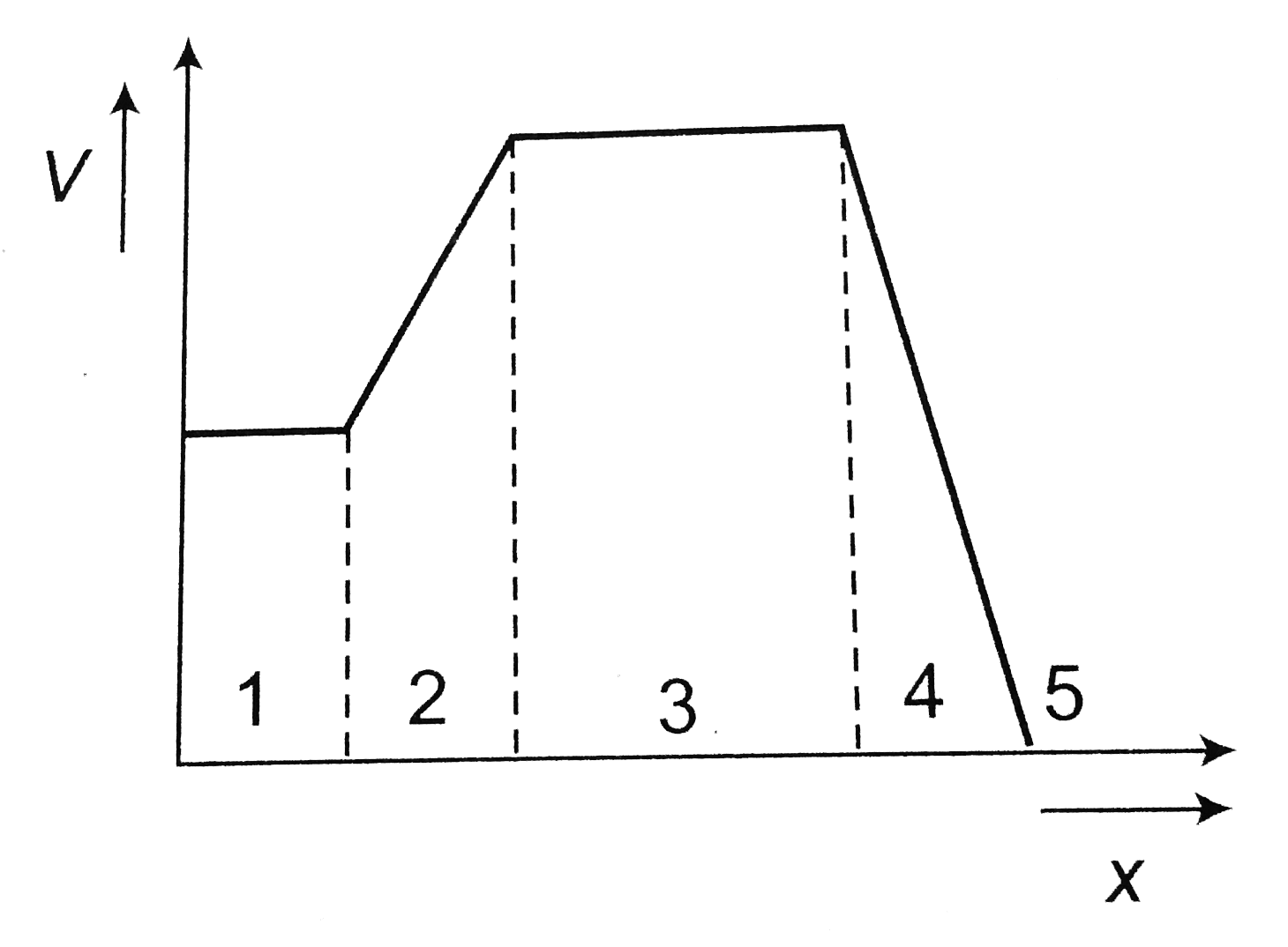The figure gives the electric potential V as a function of distance through five regions on x-axis. Which of the following is true for the electric E in these regions ?

E1>E2>E3>E4>E5
E1=E3=E5andE2<E4
E2=E4=E5andE1<E3
E1<E2<E3<E4<E5
The correct Answer is:B
Slope of the line BC < slope of the line DE E1=E3=E5andE2<E4 .

Similar Questions
The electric potential as a function of distance 'x' is shown in the figure . Draw a graph of the electric field E as a function of x.
View SolutionWhich of the following is true for the figure showing electric lines of force ? (E is electrical field, and V is potential).
 .
.
View SolutionA graph of the x-component of the electric field as a function of x in a region of space is shown in figure. The y−andz−compo≠nts of the electric field are zero in this region. If the electric potential is 10 V at the origin, then the potential at x = 2.0 m is

View SolutionThe figure gives the electric potential V as a function of distance through five regions on x-axis. Which of the following is true for the electric E in these regions ?
View SolutionA region in electric field is specified by the potential function V(x)= 4x^(2)
View SolutionA region in electric field is specified by the potential function V(x)= 4x^(3) . Determine the electric field at the point x=1 located in the region.
View SolutionA graph of the x-component of the electric field as a function of x in a region of space is shown in figure. The y- and z-components of the electric field are zero in this region. If the electric potential is 10 V at the origin, then the potential at x = 2.0 m is
View SolutionWhich of the following is true for the figure showing electric lines of force ? (E is electrical field, and V is potential). .
View Solution